In recent years, the fitness industry has experienced a significant boom, with many aspiring fitness entrepreneurs wondering “How much does it cost to open a fitness studio?”
If you’re considering jumping into the gym business and opening your own gym, you’re in the right place.
In this article, we will walk you through a detailed breakdown of the initial costs involved in opening a fitness studio. So, grab a cup of coffee, and let’s dive in!
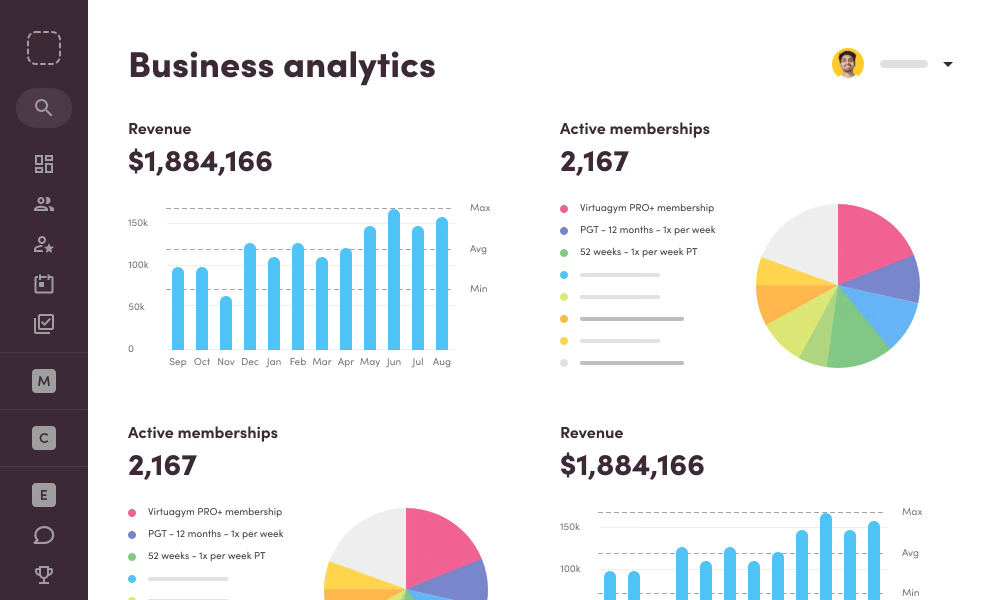
Preliminary Costs
Business Plan
Before you venture into the fitness industry, the formulation of a comprehensive business plan stands as the first step. This document is regarded as the blueprint of your business. It encapsulates various facets including:
- Business Goals: Clearly defined short-term and long-term goals that give direction to your business. It helps in keeping track of the progress and making necessary adjustments as the business evolves.
- Target Audience: A detailed analysis of potential clients, understanding their preferences, and demographics, and crafting strategies to cater to their needs effectively.
- Marketing Strategy: A well-laid-out plan that outlines how you intend to promote your fitness studio. It encompasses branding, advertising, social media engagement, and other promotional activities.
- Financial Plan: A critical section that delineates the estimated startup costs, recurring costs, and projected revenues. It helps in securing funding and keeping the business financially viable.
The creation of a business plan is a meticulous process, and seeking professional assistance can be a wise decision. Experts in this field can help in crafting a plan that is both realistic and promising, with costs for their services ranging between $2000 and $25,000, depending on the intricacies and depth of your business model.
Business Registration
Your entrepreneurial journey begins with the official registration of your business. This legal requirement can vary based on your geographical location and the chosen structure of your business - be it a sole proprietorship, a partnership, or a limited liability company (LLC). The registration process often involves:
- Selecting an appropriate fitness studio name.
- Registering with the relevant local or state authorities.
- Obtaining a Federal Employer Identification Number (EIN) for tax purposes.
The costs associated with business registration are generally in the ballpark of $100 to $800, a necessary investment to legitimize your venture and pave the way for official operations.
Licenses and Permits
To operate within the legal boundaries, acquiring the necessary licenses and permits are imperative. These may include:
- Health and Safety Permits: Making sure the safety of your members is paramount. These permits signify that your fitness studio adheres to the local health and safety regulations.
- Building and Zoning Permits: Depending on your location, you might need permits to ensure that your business complies with local zoning laws and building codes.
- Business License: A general business license that permits you to operate in a specific area.
The costs for these licenses and permits can vary significantly based on your geographical location and the specific requirements of your business, generally ranging from $300 to $3,000.
Legal Fees
The complex legal landscape of starting a business often necessitates expert guidance for gym owners. Legal consultations can assist in:
- Drafting contracts and agreements.
- Ensuring compliance with local and state laws.
- Protecting your business through appropriate legal structures.
Hiring a lawyer for these purposes can cost anywhere between $150 and $500 per hour. To safeguard your business from potential legal hurdles and to ensure a smooth start, budgeting around $2,000 to $5,000 for legal consultations is a prudent approach.
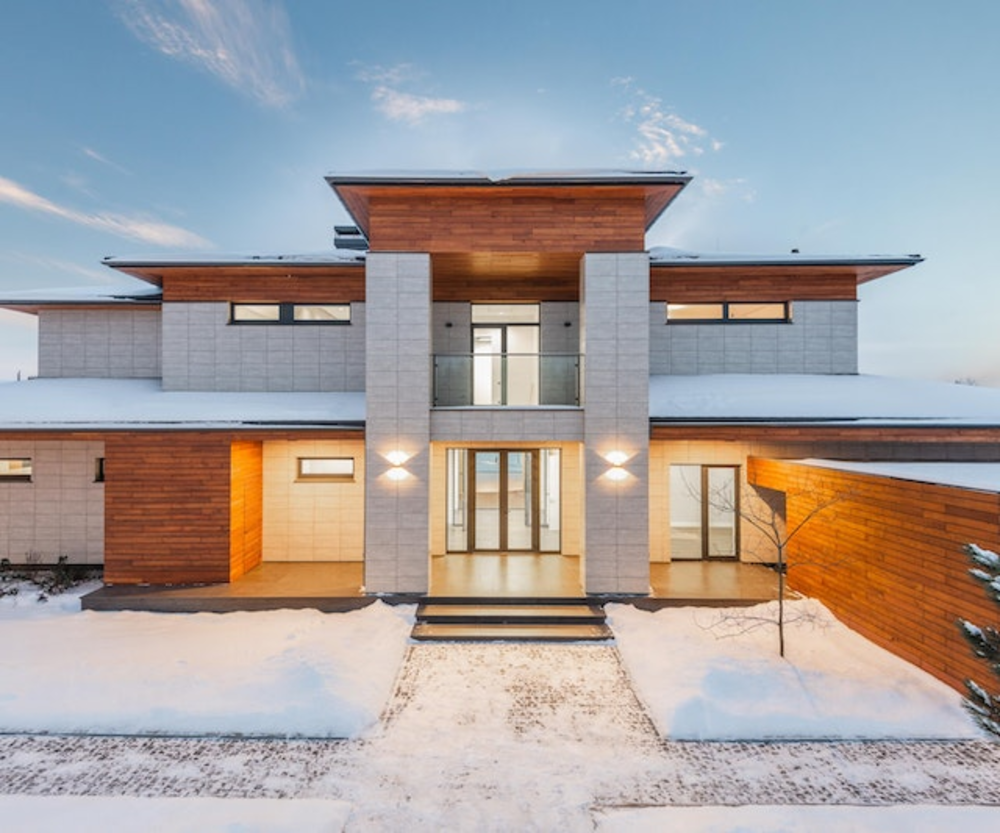
Property Acquisition
Securing the right location is a critical step in establishing your fitness studio. Here, you are generally faced with two options: renting a space or buying a property outright.
Renting
This is often a more viable option for new business owners, as it requires a lower initial investment compared to buying.
When renting, you might encounter various types of leases, such as net leases or gross leases, each with its own implications on your monthly costs.
The rental costs can vary greatly depending on factors like the size of the property, its condition, and the prevailing market rates.
Generally, you might be looking at a monthly rental cost ranging from $2,500 to $15,000. It’s also essential to factor in potential annual increases in rental rates and to negotiate the best terms possible in your lease agreement.
Buying
On the flip side, buying a property is indeed a substantial commitment. It’s like planting a flag and declaring your permanent presence in the fitness landscape.
The costs here can escalate quickly, potentially starting from $500,000 and going upwards, influenced by a myriad of factors including the location, size, and the condition of the property.
It’s a hefty sum, but it comes with the perk of complete control over the property and the potential for real estate appreciation.
Location Factors Affecting Cost
The cost of property acquisition is influenced by a myriad of factors, primarily revolving around the chosen location. Here are some aspects to consider:
- City and Neighborhood: Different cities and even neighborhoods within cities can have vastly different property values. A fitness studio in a bustling urban area might command a higher price compared to one in a suburban or rural area. Conducting a detailed analysis of property values in various neighborhoods can help you make an informed decision.
- Proximity to Amenities or Central Business Districts: Properties located close to amenities or central business districts often come with a higher price tag. These areas generally attract more foot traffic, which can potentially translate to a higher number of gym members. However, the increased cost needs to be weighed against the potential benefits to determine if it’s a worthwhile investment.
- Market Analysis: Conducting a thorough market analysis is crucial to understand the dynamics of the local real estate market. This analysis should include studying the trends in property prices, understanding the demand and supply dynamics, and evaluating the growth prospects of different areas.
- Accessibility and Visibility: The accessibility of your fitness studio can be a significant factor in attracting members. A location that is easily accessible by public transport or has ample parking space can be a plus. Similarly, a property with high visibility, situated on a busy street, might attract more walk-ins compared to a more secluded location.
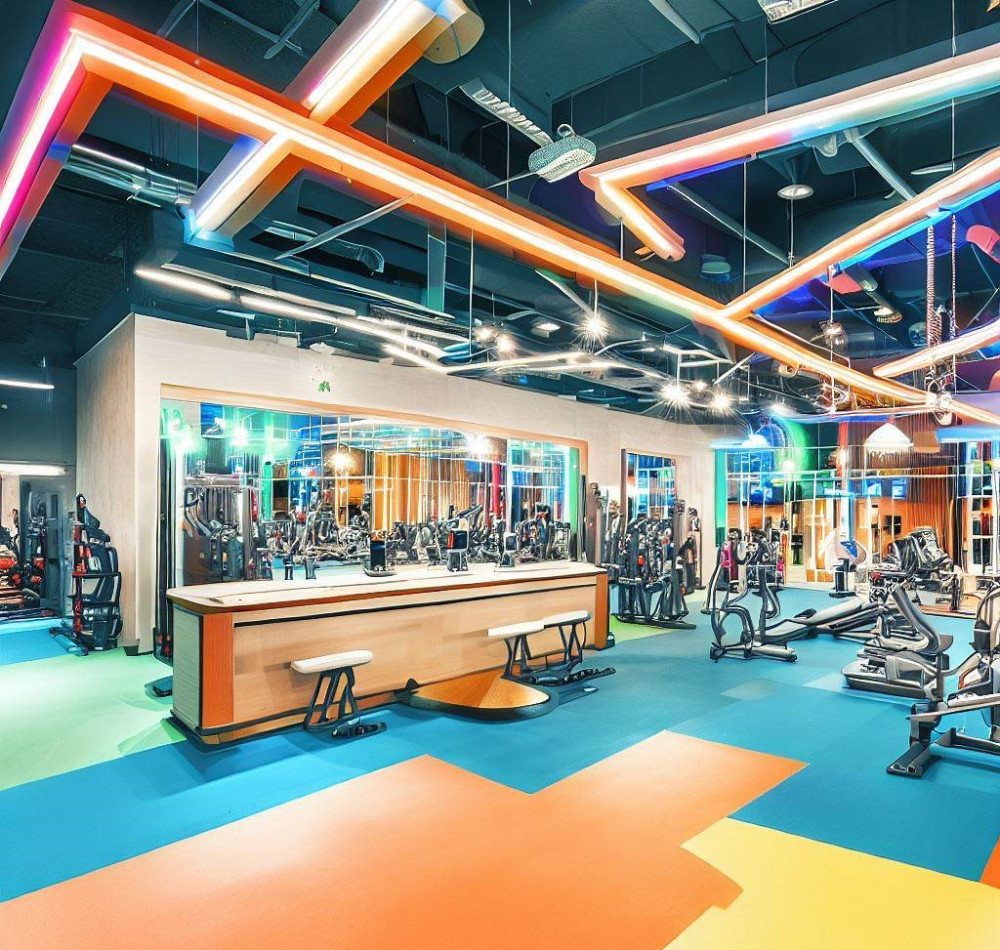
Infrastructure and Setup Costs
Let’s break down the essential infrastructure and setup costs for your business.
Aesthetics
When someone steps into your fitness studio, the look and feel of the place can either beckon them in or turn them away.
That’s why investing in the aesthetics of your studio is not just about vanity, it’s about creating an environment that resonates with your brand image and makes your members feel good.
Think about walking into a place that inspires you to push your limits, a place that feels like a second home. That’s the kind of vibe you’d want to create.
This could involve choosing the right color palette that aligns with your brand’s theme, investing in quality flooring that withstands heavy foot traffic, selecting the right lighting that creates a welcoming atmosphere, and adding decorative elements that add a touch of class and elegance to the space.
Now, creating this kind of ambiance comes with its costs. Depending on the scale of your project, you might be looking at an investment ranging from $10,000 to $50,000.
It’s like setting the stage where your members can perform their best; every detail matters.
Functional Design
The functionality of the space is equally, if not more, important. You see, a well-designed fitness studio is like a well-oiled machine.
Everything flows smoothly, and members can transition from one workout area to another without any hiccups.
This involves creating a layout that considers traffic flow, ensuring that there are designated areas for different types of workouts, well-equipped changing rooms, and a reception area that welcomes members with open arms.
It’s about creating a space where functionality meets aesthetics, offering a seamless experience to your members.
And yes, achieving this level of functionality might require a bit of an investment.
You might need to budget an additional $10,000 to $20,000 for specialized functional elements that enhance the operational efficiency of your studio.
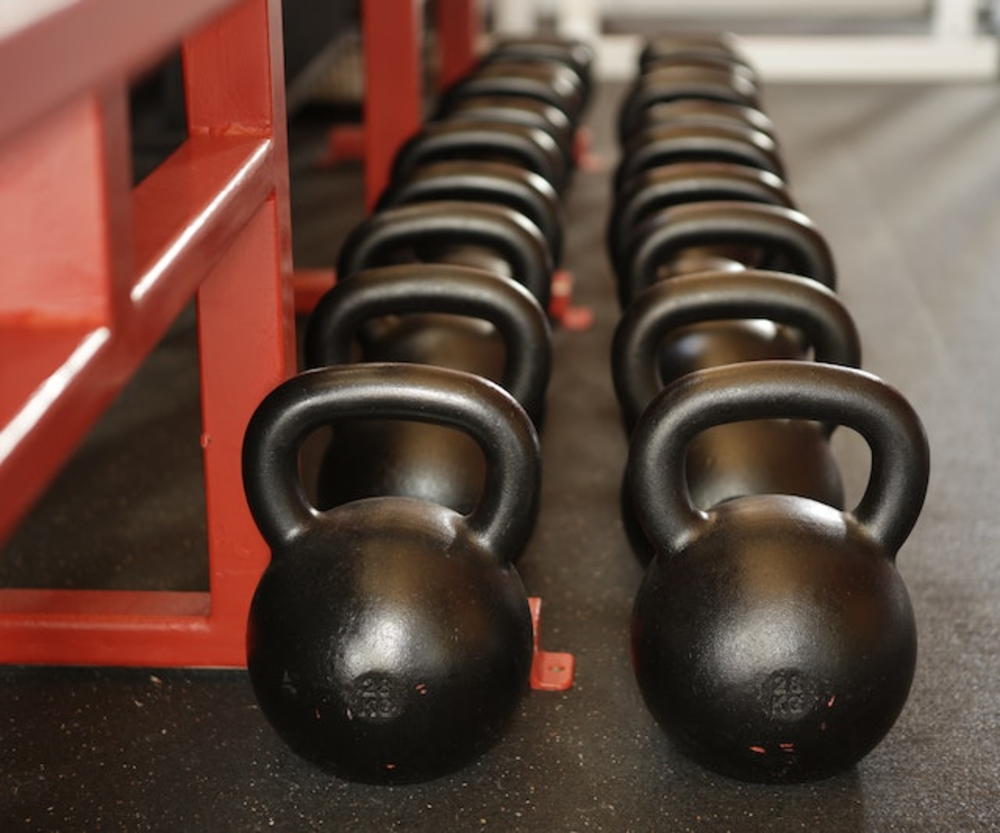
Equipment Purchase
A significant portion of your initial investment will be equipment costs. Let’s see what goes into it.
Cardio Equipment
The cardio section is where people come to keep their hearts healthy.
Equipping your studio with a range of cardio machines like treadmills, ellipticals, stationary bikes, and rowing machines is almost like a rite of passage.
But here’s the thing, quality matters. Investing in high-quality cardio equipment ensures your members have a safe and enjoyable workout experience.
Depending on the size of your gym, you might be looking at a total cost of $20,000 to $100,000 to set up a cardio section that meets the needs of your members without compromising on quality.
Strength Training Equipment
But a fitness journey isn’t just about cardio, right? A well-rounded fitness regimen involves strength training as well.
This section of your studio might house weights, benches, resistance machines, and other equipment that helps in building strength and muscle tone.
Setting up a comprehensive strength training area can be a substantial investment, with costs ranging between $20,000 and $50,000.
It’s about creating a space where members can work on building a stronger version of themselves, with the right equipment to support their goals.
Specialty Equipment
If you plan to offer classes like Pilates or yoga, you’ll need to invest in specialty equipment like Pilates reformers or yoga mats and accessories.
Creating a space that caters to these specialized fitness regimens involves a different kind of investment.
You might be looking at costs ranging between $10,000 and $30,000 to set up a section that offers a unique and focused workout experience to your members.
Technology and Software
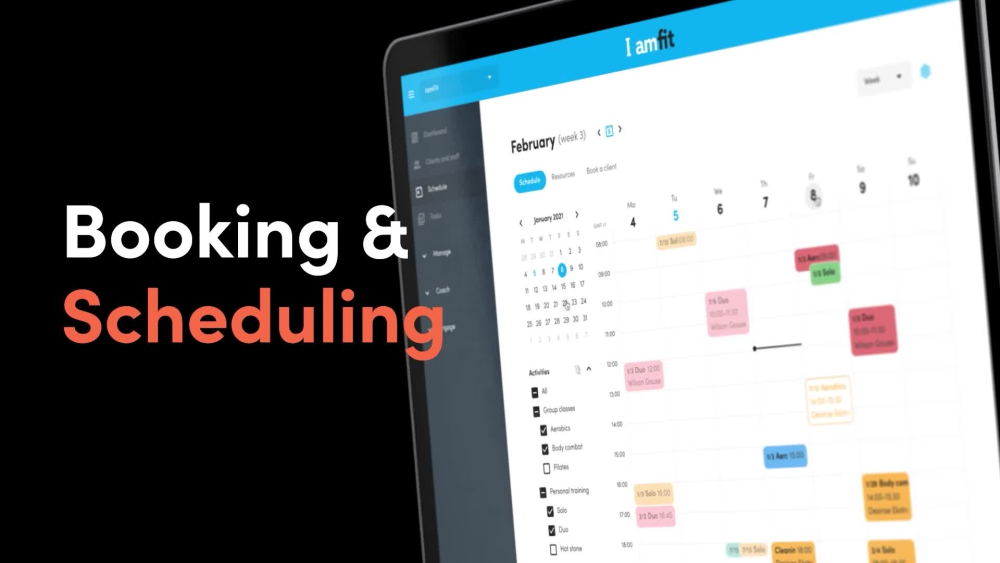
From streamlining operations to enhancing security, let’s delve into the essential tech investments that could set your fitness business up for success.
Management Software
Think about trying to keep track of all your gym members, their schedules, payments, and preferences using just pen and paper. Sounds chaotic, right?
That’s where gym management tools such as Virtuagym Fitness Studio Software step in. This software is like the central nervous system of your fitness studio.
It helps you manage bookings, keep tabs on memberships, handle billing, and even track the progress of your members.
Now, when it comes to costs, there’s a spectrum. On one end, you have basic packages that might set you back anywhere from $50 to $200 a month.
These are great for smaller gyms or those just starting out.
But if you’re aiming for a more comprehensive solution, something that offers a broader array of features, you might be looking at costs that exceed $500 per month.
It’s a bit like choosing between a basic phone and a smartphone; both serve the primary purpose, but one offers many more bells and whistles.
Security Systems
When you’re responsible for a space where people come to better themselves, ensuring their safety and the security of the facility is paramount.
Security systems are your eyes and ears, keeping a watchful gaze over your fitness studio.
This includes security cameras that monitor every nook and cranny, access control systems that ensure only authorized individuals enter, and alarms that alert you to potential security breaches.
The initial setup for a robust security system can range between $2,000 and $10,000. It’s a bit like setting up a home security system but on a larger scale.
And just like your home security might have monthly monitoring fees, your fitness studio’s system will too. These ongoing costs ensure that there’s always someone keeping an eye out, even when you’re not around.
Point of Sale System
Every time a member pays for a session, buys some gym merchandise or signs up for a special class, there’s a transaction involved.
And to make these transactions smooth, you need a point-of-sale (POS) system.
Think of it as the cashier of your fitness studio. It not only handles payments but can also manage inventory, track sales, and even offer insights into purchasing trends.
Setting up a POS system can cost you anywhere from $1,000 to $3,000 initially. And just like most software, there are monthly fees involved, typically ranging from $50 to $200, depending on the features you opt for.
By weaving these technological threads into the fabric of your fitness studio, you’re essentially gearing up for a smoother operational experience.
Operational Costs
Let’s delve into the key components that constitute the operational costs of a fitness studio.
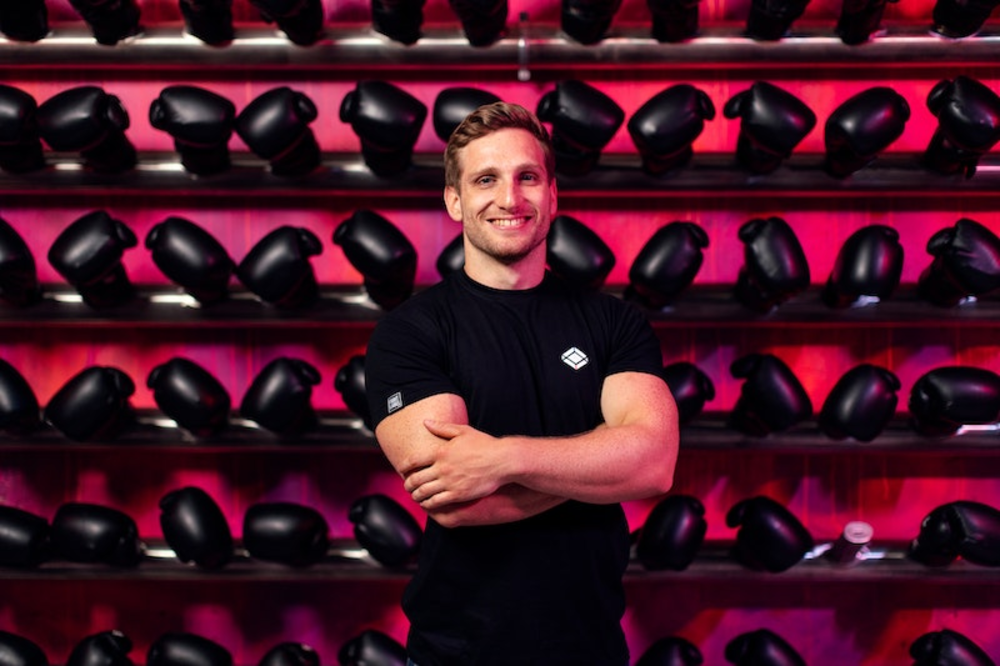
Hiring Personal Trainers
A personal trainer is someone who is going to be right there, on the floor, helping members achieve their fitness goals.
Their expertise, their guidance, and their personal touch can often be the reason members choose your studio over another.
Now, when it comes to hiring personal trainers, their charges can vary quite a bit. It’s a bit like shopping for a car; you have different models (or in this case, trainers) with varying levels of expertise and certifications.
Generally, you might find that the average cost of personal trainers can be anywhere between $40 to $100 per hour.
It’s a broad range, but it gives you room to choose what fits best within your budget and aligns with the kind of experience you want to offer at your studio.
If you’re planning to have a team of personal trainers, the annual payroll could potentially be in the range of $40,000 to $100,000.
It’s a significant investment, but one that could potentially be a cornerstone of your business.
Group Fitness Instructors
Now, if your fitness studio is planning to offer group classes - which are a great way to foster community and camaraderie among members - you’ll need to bring on board some fantastic group fitness instructors.
These are the energetic individuals who will lead classes, keeping the energy high and the motivation higher.
The cost structure for hiring fitness instructors can be quite diverse. It depends on various factors like the type of classes you plan to offer and the experience level of the instructors.
On an average scale, fitness instructors might charge you anywhere between $10 to $25 per hour.
So, when you’re budgeting for the year, an estimate of around $30,000 to $60,000 per instructor might be a realistic ballpark to be in.
It’s all about finding the right balance between offering quality classes and maintaining a healthy bottom line.
Administrative Staff
These are the individuals who keep the wheels turning smoothly, managing everything from front desk operations to ensuring the cleanliness and maintenance of your facility.
The front desk personnel are often the first faces your members see, setting the tone for their experience at your studio.
Then you have the cleaning staff, who ensure that your facility is sparkling clean, creating a pleasant environment for everyone.
And let’s not forget the maintenance staff, who ensure that all equipment is in tip-top shape, and ready for use.
When it comes to budgeting for administrative staff, the annual costs can vary based on their specific roles and responsibilities.
Generally, you might be looking at a range of $20,000 to $40,000 per employee.
It’s an investment in creating a seamless and welcoming experience for your members, day in and day out.
Marketing and Branding

A well-crafted marketing and branding strategy can not only amplify your presence but also foster a loyal community around your fitness studio. Let’s see how.
Website Development
Having a website is kind of like having a business card, but one that’s accessible to anyone, anywhere, at any time.
It’s your online storefront, where potential members can get a glimpse of what your fitness studio has to offer.
Now, creating a website isn’t just about throwing some pictures and text together. It’s about crafting a space that reflects the ethos of your fitness studio.
Depending on how intricate and feature-rich you want your website to be, the development costs can range anywhere from $2,000 to $10,000.
It’s a bit like building a house; the more complex the structure, the higher the costs. But remember, a well-designed website can be a magnet for attracting new members.
Social Media Marketing
Nowadays social media is like the virtual town square where you can connect with your audience, engage them, and build a community around your brand.
It’s not just about posting pictures or videos; it’s about crafting stories that resonate with your target audience.
Depending on how expansive you want your social media presence to be, your monthly budget could range from $500 to $5,000.
This budget encompasses everything from content creation to advertising campaigns. It’s a dynamic space, where with the right strategies, you can see a substantial return on your investment.
Offline Marketing
Let’s not forget the power of good old offline marketing. It’s about reaching out to your local community through flyers, banners, and hosting local events.
It’s a way to build a tangible connection with your potential members.
Budgeting for offline marketing can be a bit flexible. Depending on the scale of your campaigns, you might be looking at a monthly budget ranging from $1,000 to $5,000.
It’s about finding the right balance and strategies that resonate with your local community.
Utilities and Maintenance
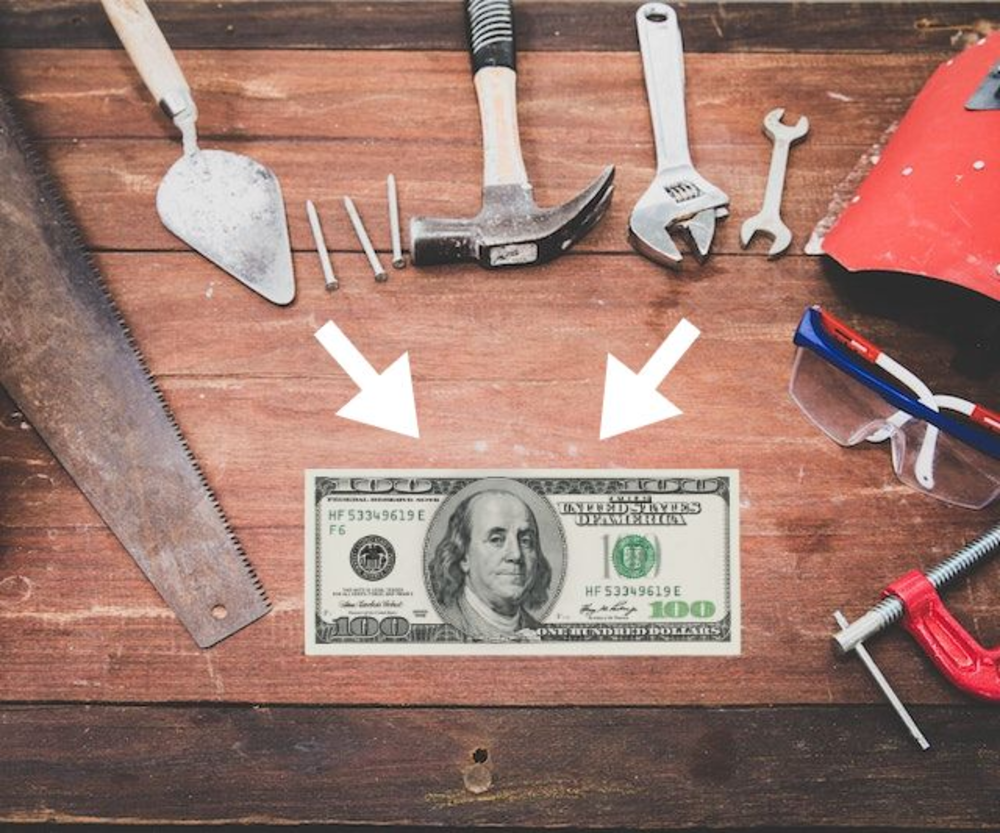
Ensuring a steady supply of utilities to maintaining the pristine condition of your facility, these recurring costs play a pivotal role in the seamless operation of your business.
Electricity
From powering the lights to running the high-powered gym equipment, your electricity bill is something that needs careful consideration.
Depending on the size of your facility and the kind of equipment you house, your monthly electricity bills might hover between $500 and $2,000.
It’s a recurring cost that’s essential to keep the heartbeat of your fitness studio going.
Water
Whether it’s for showers or providing fresh drinking water, the water bill is another significant chunk of your monthly utilities expense.
A ballpark estimate for your monthly water bills would be somewhere between $200 and $500. It’s about ensuring that your members have access to clean and fresh water facilities at all times.
Maintenance Costs
Maintenance encompasses a wide range of activities, including equipment upkeep, cleaning, and minor repairs.
Setting aside a budget of around $500 to $1,500 per month should cover most of your maintenance needs. It’s about creating an environment where your members feel comfortable and taken care of.
Insurance Costs

Let’s delve into the different types of insurance you might need and the associated costs to help you plan better.
General Liability Insurance
Now, when you’re running a fitness studio, it’s a bit like inviting people into your home; you want to make sure they’re safe and protected.
This type of insurance is like a safety net, shielding your business from potential legal hiccups that might arise from accidents or other unforeseen incidents on your premises.
Now, the cost of this insurance can vary quite a bit, depending on factors like the size of your fitness studio and the kind of activities you have going on there.
Generally speaking, you might be looking at an annual premium ranging from $500 to $2,000. It’s a small price to pay for peace of mind, don’t you think?
Property Insurance
Now, moving on to property insurance. Think of this as a protective layer for all the tangible assets in your fitness studio - from the state-of-the-art gym equipment to the very building itself.
This insurance helps you safeguard your investment, ensuring that you’re covered in case of damages or losses.
The annual premium for property insurance can be a bit of a range, generally falling between $1,000 and $3,000.
The exact amount would depend on the value of the assets you’re insuring. It acts as a safety cover for your investments, making sure you can bounce back swiftly in case of any mishaps.
Workers’ Compensation Insurance
If you’re planning to have a team of dedicated staff at your fitness studio, workers’ compensation insurance is something you can’t overlook.
It’s a legal requirement in most places and for a good reason.
This insurance ensures that your team is protected in case of work-related injuries or illnesses, offering them the support they need during recovery.
Now, the cost of this insurance can vary quite a bit, depending on factors like the number of employees and the nature of their jobs.
Budgeting between $1,500 and $3,500 annually might be a prudent approach.
It’s a way to show your team that you care, offering them a safety net as they work to make your fitness studio a success.
Contingency Fund

It’s a rainy day fund for your business.
This fund acts as a financial cushion, ready to soften the blow of unexpected costs that might pop up - think equipment breakdowns, sudden repairs, or other unforeseen events that might throw a wrench in your operations.
Setting aside at least 3-6 months of operating expenses in your contingency fund is generally seen as a wise move.
It gives you the financial breathing space to navigate through rough patches without breaking a sweat.
Suggested Size
When it comes to deciding the size of your contingency fund, it’s a bit like choosing the right size of workout gear; it needs to fit just right.
Various factors come into play here, including the stability of your income, the age of your equipment, and the overall condition of your facility.
You might consider setting aside a fund of about $20,000 to $50,000 as a starting point. It’s a substantial amount, yes, but it’s also a buffer that can help you navigate through unexpected challenges with ease.
Conclusion
Opening a fitness studio is an exciting venture, but it comes with its set of challenges.
From understanding the gym start-up costs to managing the monthly costs efficiently, a gym owner needs to be prepared for a myriad of responsibilities.
We hope this guide has provided you with a clear picture of what it takes to open a gym and the costs involved.
The key to a successful fitness business is meticulous planning and a clear understanding of both the initial and recurring costs.
FAQ
Is it profitable to open a gym?
Yes, opening a gym can be profitable, especially with a well-planned business strategy and a growing interest in health and fitness globally.
How profitable is the fitness business?
The profitability of a fitness business can vary but it has the potential to be highly profitable, particularly with the right combination of location, services, and marketing.
How do I start a gym studio?
To start a gym studio, you need to conduct market research, choose a suitable location, secure the necessary funding, obtain relevant licenses and permits, hire qualified staff, and implement a robust marketing strategy.
How much investment do I need to open a gym?
The investment needed to open a gym can vary greatly depending on various factors including location, size, and services offered, but generally, it can range from $50,000 to $500,000.




